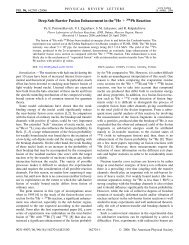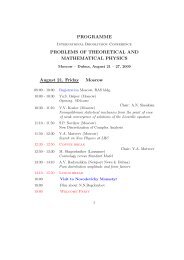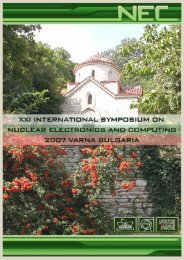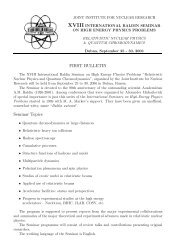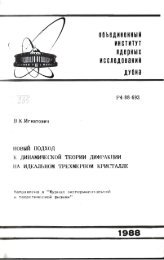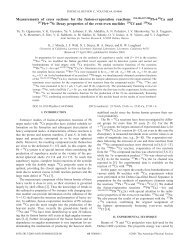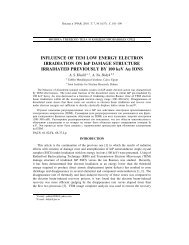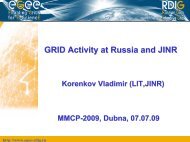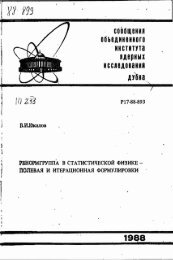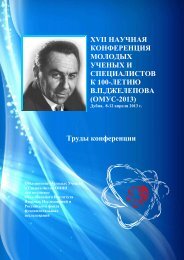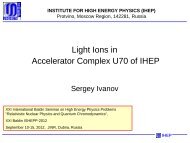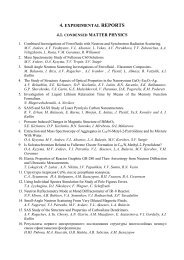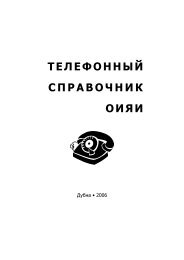Joint Institute for Nuclear Research Relativistic ... - Index of - JINR
Joint Institute for Nuclear Research Relativistic ... - Index of - JINR
Joint Institute for Nuclear Research Relativistic ... - Index of - JINR
You also want an ePaper? Increase the reach of your titles
YUMPU automatically turns print PDFs into web optimized ePapers that Google loves.
MEASURING THE PHASE BETWEEN STRONG AND EM J/ψ DECAY<br />
AMPLITUDES<br />
M. Destefanis 1†<br />
(1) Università degli Studi di Torino and INFN Torino<br />
† E-mail: marco.destefanis@to.infn.it<br />
QCD is certainly a well established theory <strong>for</strong> the strong interactions. Yet several<br />
physics topics which could be investigated with modern facilities can still <strong>of</strong>fer various<br />
test <strong>of</strong> this theory. The investigation <strong>of</strong> the kinematic region near J/ψ production can<br />
provide a check <strong>of</strong> the QCD perturbative approach. In this energy range, an interference<br />
between the resonant e + e − → J/ψ → hadrons and the non-resonant e + e − → hadrons<br />
amplitudes can in principle occur. A perturbative approach suggests that those amplitudes<br />
are expected to be all almost real, i.e. the relative phase between the above cited<br />
amplitudes is expected to be 0 ◦ /180 ◦ , depcting hence the full interference scenario. Nevertheless,<br />
data available in the literature concordantly suggest a relative phase <strong>of</strong> 90 ◦ and,<br />
hence, the no interference scenario. An experimental approach able to provide a measurement<br />
<strong>of</strong> the relative phase in a model independent way, and in particular its deployment<br />
in the BESIII scenario, will be discussed in details.<br />
40



